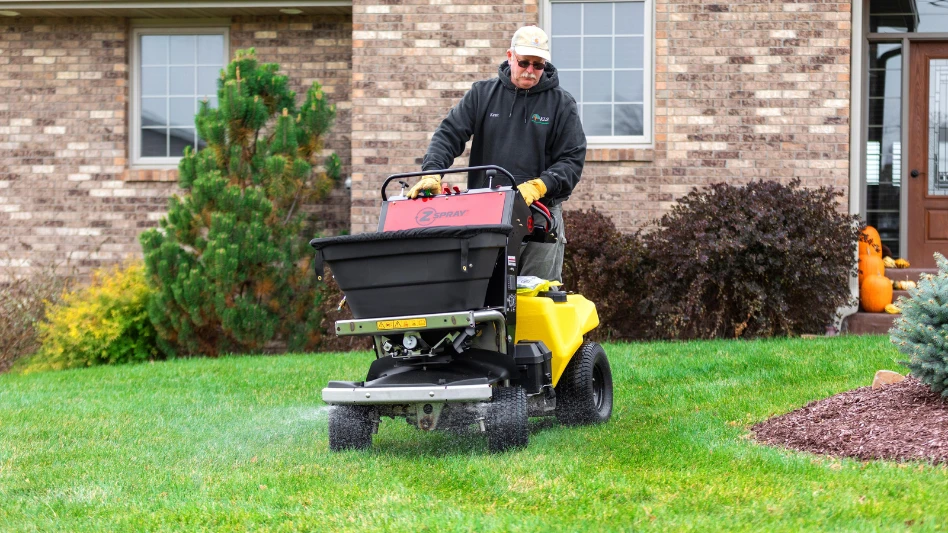
COVID-19 couldn’t catch Green Lawn Fertilizing, which had its best year yet despite the pandemic.
“2020 turned out to be a record-breaking year for us, we grew over 23% as a company,” said John Guth, vice president of the lawn care divison. The company closed the year with about $23,500,000 in revenue and is projected to earn about $29,250,000 in 2021.
And things certainly haven’t slowed down, according to Guth. Lots of rain this spring meant crews were out combatting common weeds early.
“In contrast to the spring of 2020 we received higher amounts of precipitation during March and April,” he said. “This equated to damper soils and a large amount of Hairy bittercress emerging and going to flower. Although this particular broadleaf weed isn’t challenging to control, the sheer amount of it this season received great attention from our customers.”
Guth said the Hairy bittercress isn’t the only weed customers are noticing more and more in their lawns.
 John Guth
John Guth
“We also noticed a greater amount of Lesser Celandine encroaching into our customers lawns this spring. This weed is an invasive plant that is part of the Buttercup family. It has proven to be challenging to control due to its aggressive growth habit and development of tubers,” he said.
Due to the variable weather in the Pennsylvania, New Jersey and Delaware areas Green Lawn services, Guth said crabgrass can be another big issue.
“Within our market, crabgrass pressure is a significant problem, the growing conditions we experience are very conducive to encouraging the growth of this weed,” he said. “As soon as we start lawn service in March, we immediately start by applying a pre-emergent application to our customers lawns, we then perform a second pre-emergent application for our customers six weeks from the initial application. This significantly has reduced crabgrass pressure for our customers later in the season.”
But perhaps the most problematic element of the season isn’t even a weed – but the Spotted lanternfly, an invasive insect that has continued to spread across Pennsylvania since it was first discovered in 2014.
“These pests cause severe injury to landscapes and excrete large amounts of honeydew that encourages the growth of black sooty mold making outside surfaces unsightly and at times unusable,” Guth said. “Spotted lanternflies overwinter in eggs and hatch during late spring, emerging as nymphs. We are just beginning to see this season’s first instar stage of the nymph emerge.”
Guth says the company came up with a solution to help handle this ever-growing problem.
“We provide a specialty service that targets these pests,” he said. “Our spotted lanternfly service includes four annual applications using a combination of contact and systemic insecticides that provide both immediate knockdown as well as residual control to help protect our customers’ landscapes.”
In addition to lawn care and Spotted lanternfly control, the company also provides aeration and overseeding; tree care; ant, flea and tick control; mosquito control; and termite control.
Guth said Green Lawn is still working hard to grow its pest control track, which launched in 2012.
“When we launched Green Pest Solutions, the plan was to leverage our lawn customer base to rapidly grow pest,” he said. “That proved difficult given the need-based nature of pest customer acquisition. We’ve grown the pest business to over 12,000 customers but have just 7% penetration in the lawn business.”
Latest from Lawn & Landscape
- PERC helps debut propane direct-injection fuel system at ACT Expo 2025
- Retargeting Ads – A Secret Weapon for Growing Your Lawn Care Business
- Leading a growing company
- Project EverGreen launches Clean Air Calculator
- Rain Bird acquires smart lawn care company OtO from Toronto
- PBI-Gordon names Marvin as VP of research and development
- Mean Green rolls out Vanquish Autonomous mower
- Focal Pointe launches new podcast series







